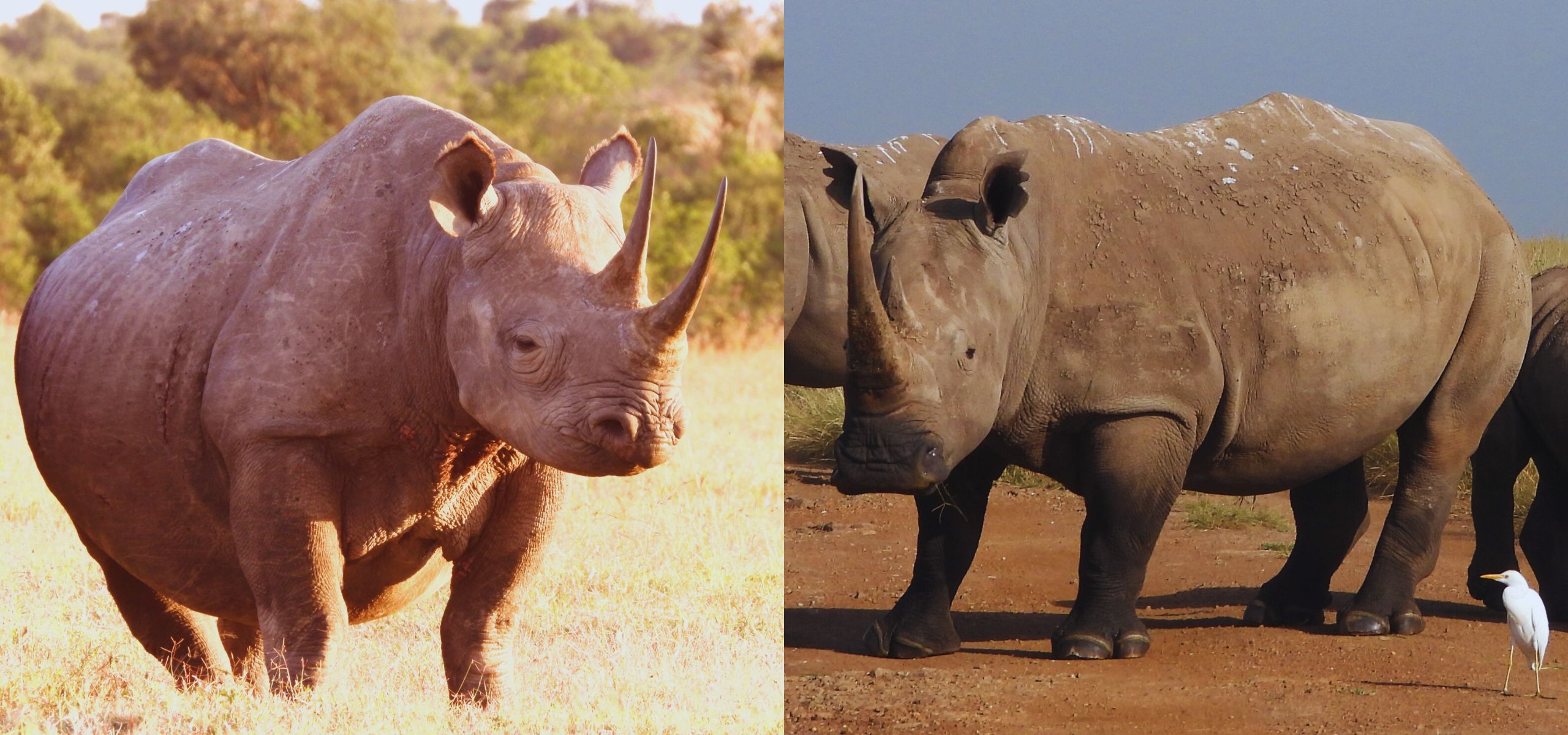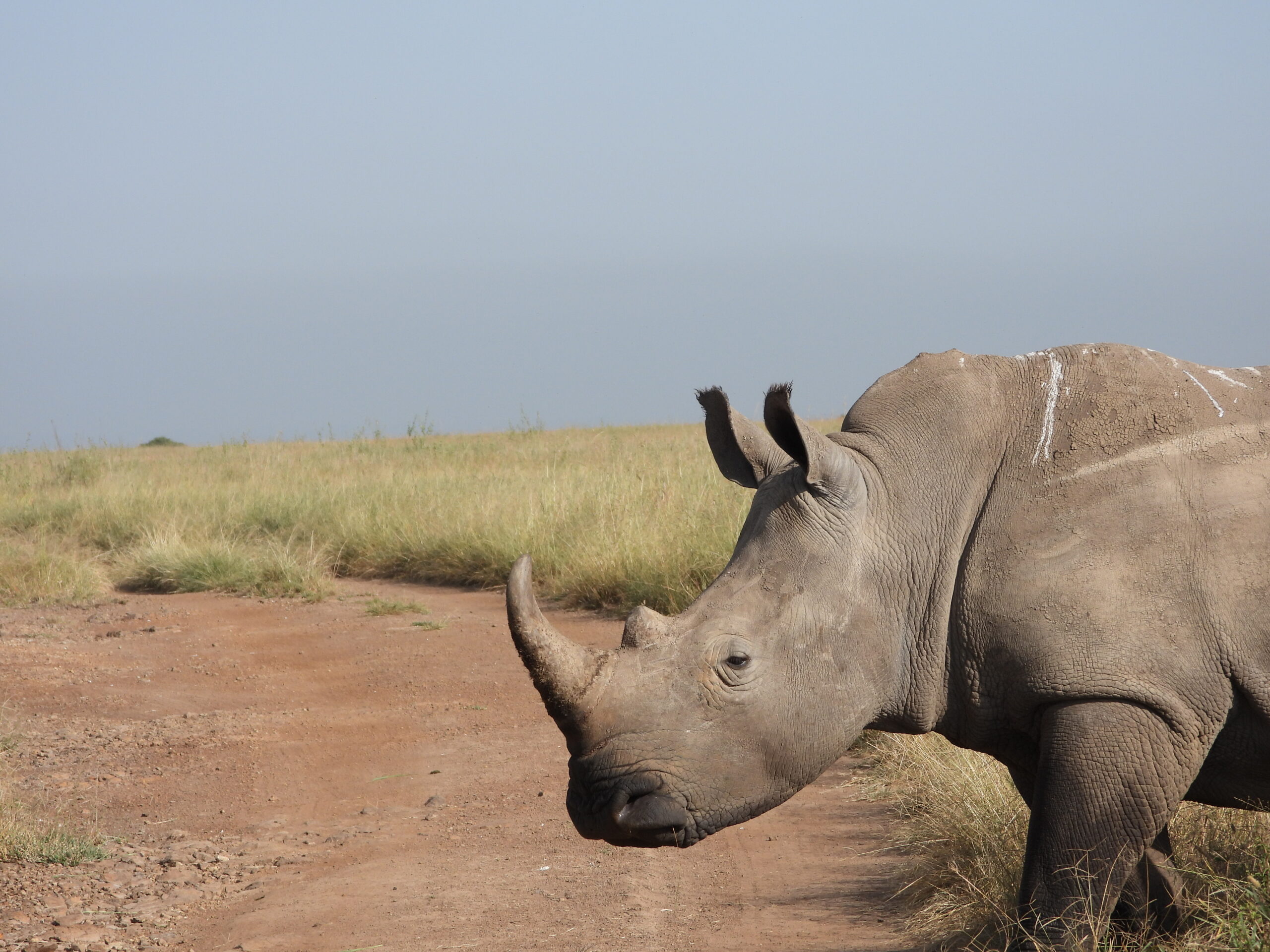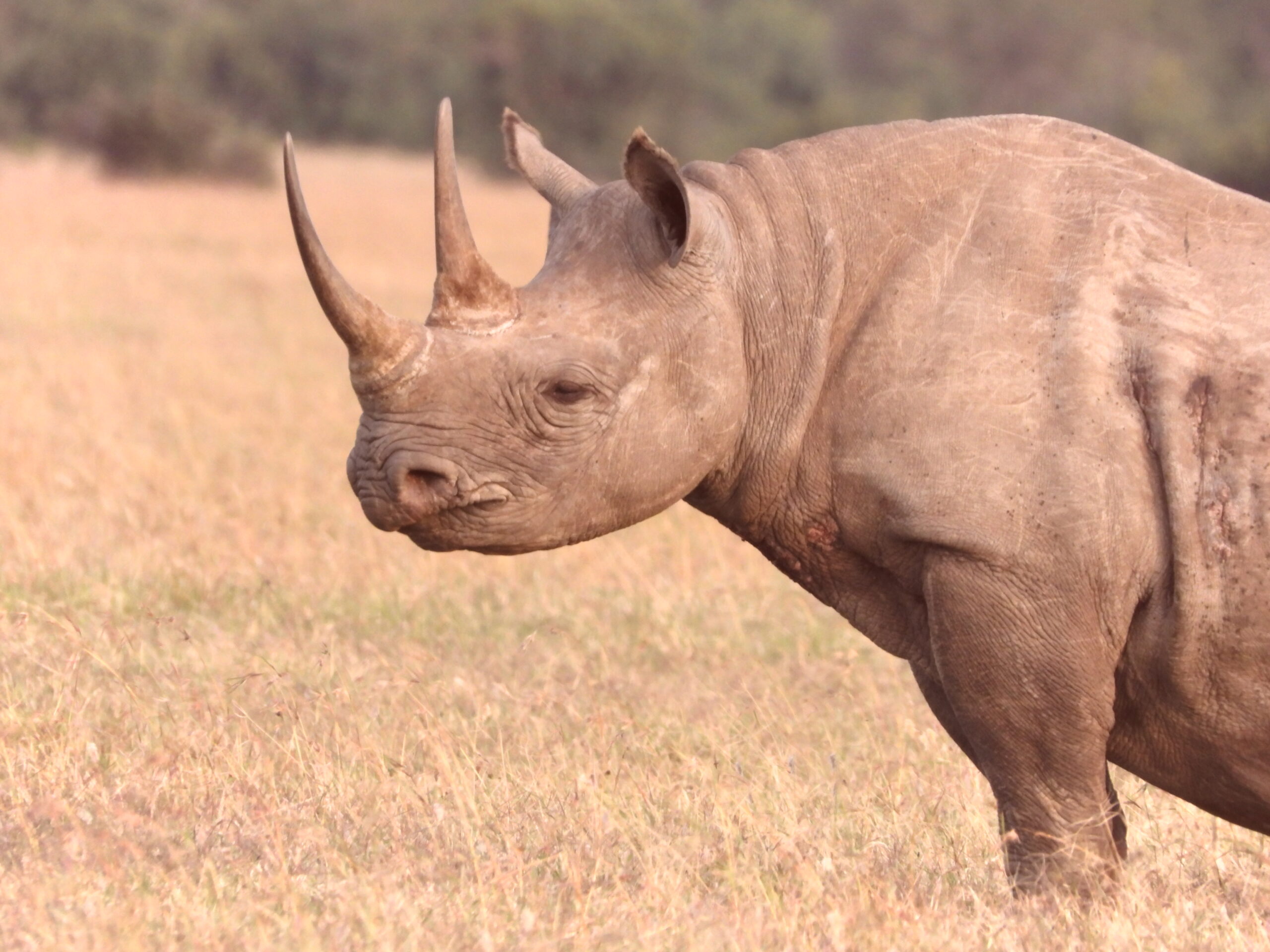
White Rhino vs Black Rhino
White Rhino vs Black Rhino: Key Differences and Where to See Them in Kenya. Rhinos are among Africa’s most iconic and endangered animals. Kenya is one of the few countries where you can still see both the white rhinoceros and the black rhinoceros in the wild. But despite their names, these two species aren’t named for their color — and they are very different in many ways.
In this guide, Ahambi Tours breaks down the key differences between white and black rhinos, from appearance and behavior to habitat and conservation. Whether you’re planning a Kenya safari or simply curious about these magnificent creatures, this article will give you a clear and fascinating comparison.
Origin of Their Names- White Rhino vs Black Rhino
- White Rhino: The name “white” comes from a mistranslation of the Afrikaans word “wijde,” meaning “wide,” referring to its wide, square mouth.
- Black Rhino: The term “black” was used to differentiate it from the white rhino, but both species are actually gray in color.
So, the names have nothing to do with their color!
Physical Appearance- White Rhino vs Black Rhino
| Feature | White Rhino | Black Rhino |
| Size | Larger (up to 2,300 kg) | Smaller (up to 1,400 kg) |
| Body Shape | Broad chest, large frame | More compact and muscular |
| Mouth Shape | Wide, square-lipped for grazing | Hooked lip for browsing |
| Hump | Has a noticeable hump on the neck | Hump is much less pronounced |
| Head Position | Head held low (closer to the ground) | Head carried high |
The White Rhino

The white rhino is the second-largest land mammal after the elephant, while the black rhino is smaller and more agile.
The Black Rhino

Behavior and Temperament
| Behavior Trait | White Rhino | Black Rhino |
| Social Structure | More social, lives in groups | Solitary and territorial |
| Temperament | Calm and less aggressive | More aggressive and unpredictable |
| Speed | Slower | Faster and more agile |
Black rhinos are often more difficult to spot due to their elusive and solitary nature.
Diet and Feeding
| Feeding Style | White Rhino | Black Rhino |
| Feeding Habit | Grazes on grass | Browses on bushes, shrubs, and trees |
| Mouth Adaptation | Square-lipped for ground grazing | Hooked-lipped for picking leaves |
You’ll often see white rhinos grazing in open savannas, while black rhinos prefer browsing in dense bushlands.
Habitat and Distribution in Kenya
| Rhino Type | Where to See Them in Kenya |
| White Rhino | Ol Pejeta Conservancy, Lake Nakuru National Park, Nairobi National Park, Lewa Conservancy |
| Black Rhino | Lewa Conservancy, Tsavo West, Maasai Mara, Ol Pejeta, Aberdare National Park, Lake Nakuru National Park, Nairobi National Park |
Both species are critically protected, and Ol Pejeta Conservancy is one of the only places in the world where you can see both black and white rhinos in the same location — including the last two northern white rhinos on Earth.
Conservation Status- White Rhino vs Black Rhino
| Conservation Focus | White Rhino | Black Rhino |
| Status | Near Threatened / Critically Endangered (North) | Critically Endangered |
| Threats | Poaching, habitat loss | Poaching, habitat degradation |
| Estimated Total in Kenya | 750 southern white rhinos | 853 black rhinos |
Kenya is a global leader in rhino conservation, with strong anti-poaching laws, community conservancies, and protected habitats.
Ol Pejeta Conservancy is home to the last two northern white rhinos and about 165 black rhinos, making it a global rhino stronghold
Which Rhino Is Easier to See on Safari?
- White rhinos are more abundant and easier to see due to their size, calm behavior, and preference for open grasslands.
- Black rhinos are harder to spot, often hidden in thick bush and more active at dawn and dusk.
Ahambi Tours includes rhino tracking opportunities in both open savannas and conservancies like Ol Pejeta, Lewa, and Lake Nakuru to increase your chances of seeing both.
Frequently Asked Questions (FAQs)
What is the difference between a white rhino and a black rhino?
The main differences are in size, behavior, and feeding habits. White rhinos are larger, more social, and have wide, flat mouths suited for grazing grass. Black rhinos are smaller, more solitary, and have hooked lips for browsing shrubs and trees. Despite their names, both species are grey.
Why are they called white and black rhinos if they are both grey?
The name “white rhino” comes from a misinterpretation of the Afrikaans word “wijde”, meaning “wide,” referring to its mouth. “Black rhino” was simply used to distinguish it from the white rhino. Their names have nothing to do with color.
Where can I see both black and white rhinos in Kenya?
The best place to see both species is Ol Pejeta Conservancy, which is home to over 160 black rhinos and a large population of southern white rhinos, including the last two northern white rhinos. You can also spot them in parks like Lake Nakuru, Nairobi National Park, Lewa, and Tsavo West.
Are black rhinos more dangerous than white rhinos?
Yes, black rhinos tend to be more aggressive and unpredictable due to their solitary nature and poor eyesight. White rhinos are generally more docile and calm, especially in open habitats.
How many rhinos are left in Kenya?
As of the latest reports, Kenya has approximately 750 white rhinos and 853 black rhinos. These numbers are the result of decades of conservation efforts by both the government and private conservancies.
Can I track rhinos on foot in Kenya?
In certain conservancies like Ol Pejeta, you can take part in guided rhino tracking experiences on foot with armed rangers and professional guides. Ahambi Tours can include this in your custom safari itinerary.
What is the best time to see rhinos in Kenya?
Rhinos can be seen all year round, but the best time is during the dry seasons (January–March and June–October), when animals gather around water sources, making sightings easier.
Plan a Rhino Safari with Ahambi Tours
Whether you’re fascinated by the size and grace of the white rhino or the power and mystery of the black rhino, Kenya offers an unmatched opportunity to see them up close.
At Ahambi Tours, our expertly planned wildlife safaris will take you to the best parks and conservancies for rhino tracking — including custom 10-day safaris that ensure sightings of both black and white rhinos, along with the Big Five.
The white and black rhino may look similar at first glance, but they are very different in behavior, body structure, diet, and temperament. Seeing both in their natural habitat is a rare and rewarding safari experience and Kenya is one of the few places where you can do that.
Let Ahambi Tours take you there. To book your Kenya safari, visit www.ahambitours.co.ke Email us at info@ahambitours.co.ke WhatsApp us at +254 725 727167
